Prevent back pain
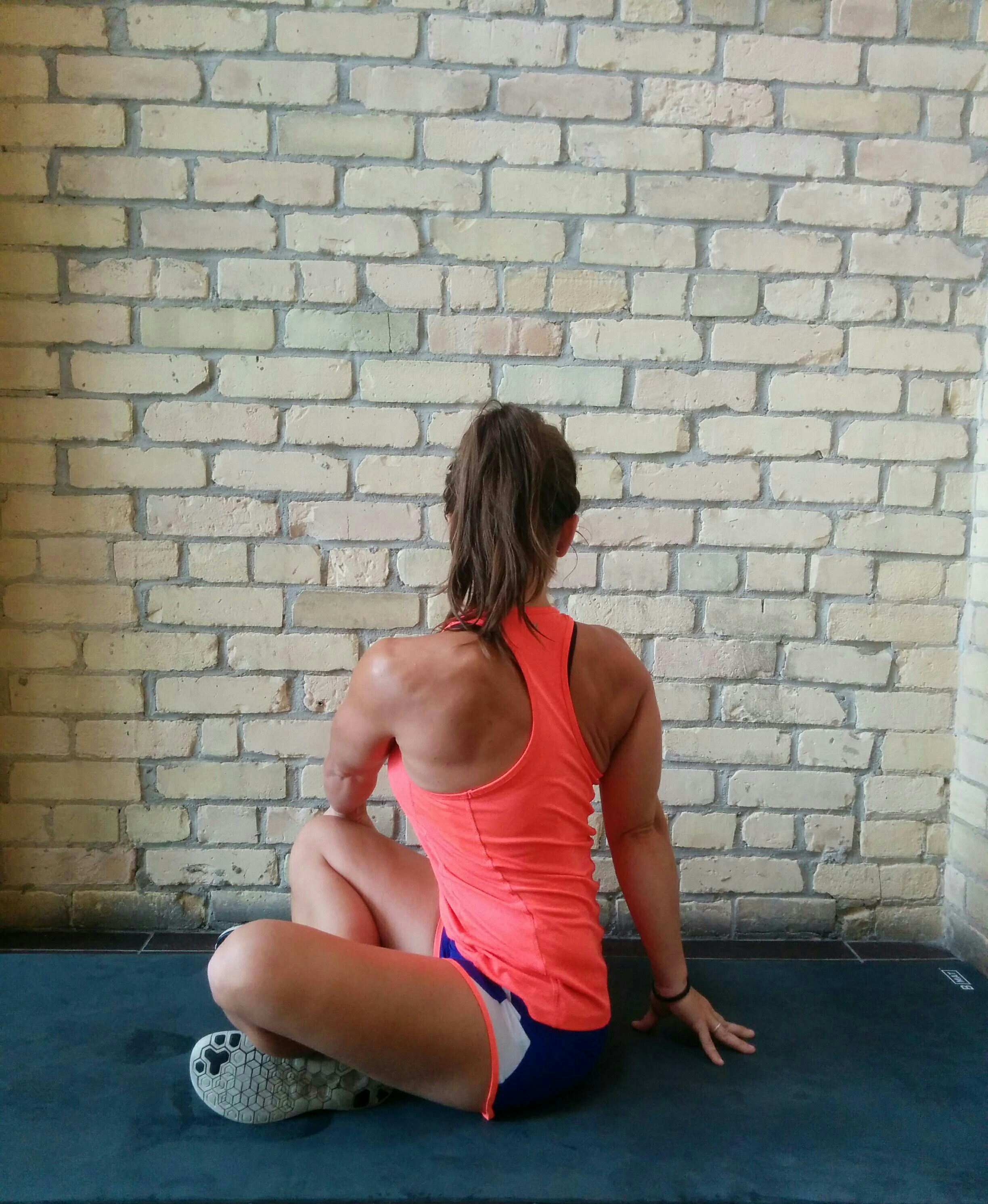
Despite a person’s level of activity, it seems inevitable that everyone will experience lower back pain at some point in their lives. Lower back pain is felt in the lumbar region of the spine, starting below the back rib cage down to the tailbone. The causes of this pain and its symptoms can vary depending on whether damage or strain occurs in the muscles, bones or nerves. Muscular pain in the lower back has been linked to tight hamstrings and is the most likely cause of lower back pain in active individuals. For runners, the source of their back pain could be due to the tightness in their legs, specifically their shortened hamstrings.
The hamstrings (three muscles at the back of the thighs) attach to the bottom of the pelvis and run down the back of the leg to the knee. When the hamstrings are tight and shortened they tug on the pelvis. If the core muscles are weak and unable to oppose this pulling, the pelvis moves backwards into a posterior tilt. As a result this can flatten the lower back, changing the natural curve of the spine. This creates stress on the lumbar spine and can cause pain. Prevent pain by strengthening the core and lengthening the hamstrings through stretching.
To stretch tight hamstrings without straining the lower back further, try pyramid pose.
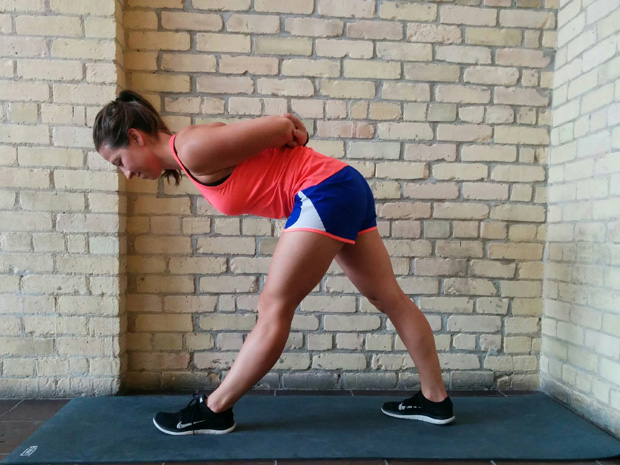
Pyramid Pose – Stretches the hamstrings (as well as the gluteus maximus, calves, and hip abductors)
Start in a standing position. Step the right leg back two or three feet and turn the toes to a 45 degree angle, aligning the right and left heel. Square your hips and torso forward. Reach your arms behind your back, and grab each elbow with the opposite hand. Take a deep breath in and elongate your spine from your pelvis to the top of your head. On your exhale roll your shoulders down your back and gently draw your shoulder blades towards each other. Ensure your abdominals and core are engaged to prevent your back from arching and your ribs from puffing out. Inhale in this position and, on your exhale, fold forward over your left leg. Try to hold this position for 15-30 seconds while keeping your back straight. Avoid rounding the upper back. Repeat on the other side.
To help increase flexibility of the spine, release tension in the low back, and help alleviate pain, try practicing the poses below.
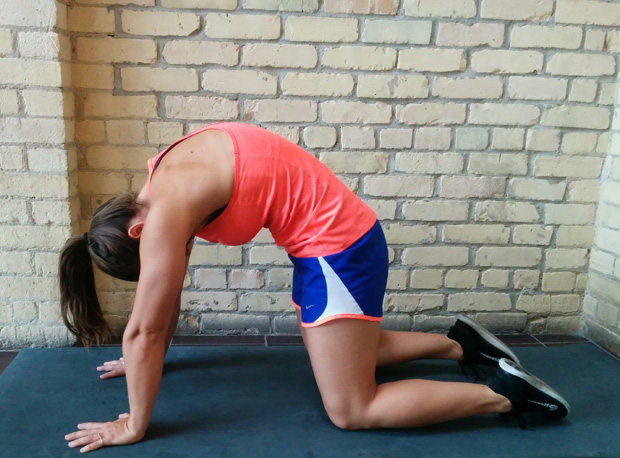
Cat/Cow Pose – Stretches the back and spine
Start on your hands and knees in table pose. In this position your back is flat and your spine is neutral. Your hands should be shoulder width apart with your wrists inline with your shoulders. Your knees should be hip-width apart and your knees directly below your hips. Place a blanket under your knees for extra comfort. Take a deep breath in and lift your pelvis to the sky, draw your belly towards the ground. Lift your chin so your eyes are gazing forward, moving your spine into extension (arched back). This is cow pose.
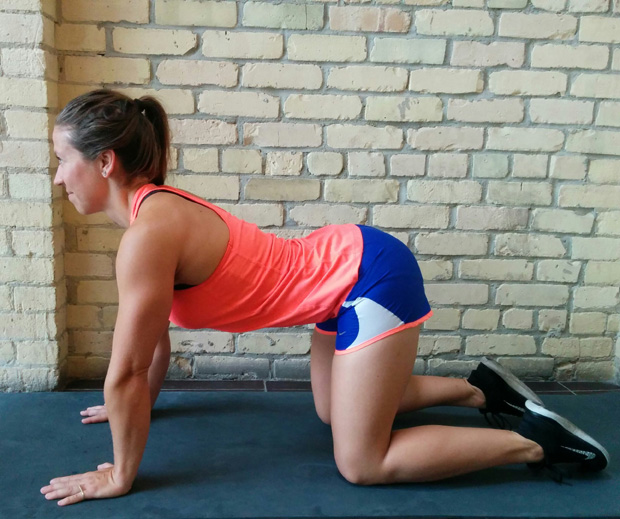
On your exhalation tuck your pelvis under, drawing your pubic bone forward, scooping the belly in and rounding the spine. Gently lower your head bringing your chin towards your chest, moving the spine into flexion (rounded back). This is cat pose. Take 5-10 breaths moving into cow on the inhale and cat on the exhale.
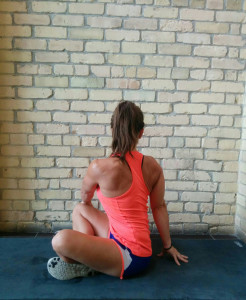
Seated Twist – Stretches the erector spinae muscles in the back
Begin seated with your legs crossed. On an inhale, sit tall, elongating the spine and reaching the crown of your head to the sky. If your hips are tight and your back begins to round, sit on a pillow to prop your hips above your knees. This will help reduce any strain in your back. Place your right hand on the floor behind your right hip and bring your left hand to your right knee. On your exhale, begin to twist slowly to the right, twisting from your core. Try to hold this pose for 15-30 seconds. Come out of the pose on an exhalation and repeat on the other side.
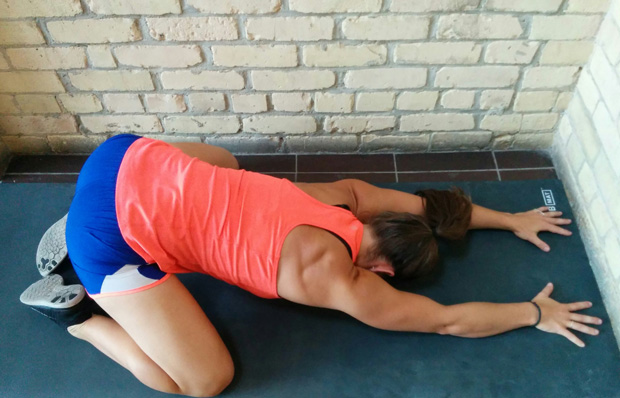
Extended Childs Pose – Stretches the erector spinae muscles in the back
Begin on your hands and knees in table pose. Inhale and spread your knees apart, keeping your big toes together. Exhale and sit back, lowering your buttocks to your heels. Inhale in this position and as you exhale walk your hands forward, lowering your chest and forehead to the ground. Try and hold this position for 15-30 seconds. Try this pose at the end of your stretching session as it also helps relax and restore the body.
*Note: ensure you speak with a medical professional if you are experiencing severe back pain or shooting pain down your leg, as it could be an indication of more serious problems such as a pinched nerve or bulging disk.


